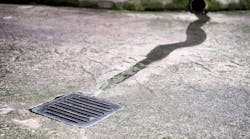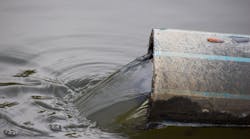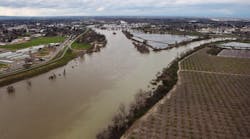Apr. 21, 2011 -- Researchers from North Carolina State University have discovered how fat, oil and grease (FOG) in sewer lines can create hardened deposits that turn into soap and contribute to sewer overflows.
"We found that FOG deposits in sewage collection systems are created by chemical reactions that turn the fatty acids from FOG into basically a huge lump of soap," said Dr. Joel Ducoste, a professor of civil, construction and environmental engineering at NC State and co-author of a paper describing the research.
These hardened FOG deposits reduce the flow of wastewater in the pipes, contributing to sewer overflows -- which can cause environmental and public-health problems and lead to costly fines and repairs.
The research team used a technique called Fourier Transform Infrared (FTIR) spectroscopy to determine what the FOG deposits were made of at the molecular level. Using this technique, researchers confirmed that the hardened deposits were made of calcium-based fatty acid salts -- or soap.
"FOG itself cannot create these deposits," Ducoste said. "The FOG must first be broken down into its constituent parts: glycerol and free fatty acids. These free fatty acids -- specifically, saturated fatty acids -- can react with calcium in the sewage collection system to form the hardened deposits.
Ducoste explained that until now, scientists didn't know how the deposits were forming. The researchers are now focused on determining where the calcium in the collection system is coming from, and how quickly these deposits actually form. Once they've resolved those questions, Ducoste said, they will be able to create numerical models to predict where a sewage system may have "hot spots" that are particularly susceptible to these blockages.
"If we know how -- and how quickly -- these deposits form," said Ducoste, "it may provide scientific data to support policy decisions related to preventing sewer overflows."
###


